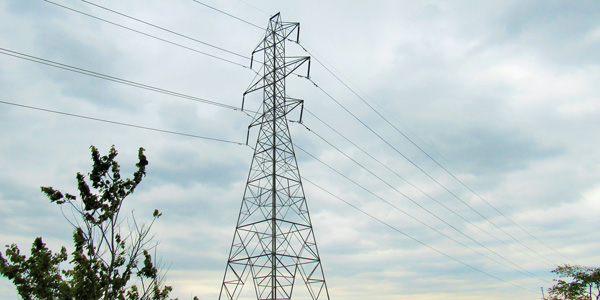MISO this week said it foresees hundreds of gigawatts in mostly carbon-free resource additions through 2039, according to its new transmission planning future scenarios.
The prediction is part of the development of three, 20-year scenarios to be used in MISO’s transmission planning beginning with the 2021 cycle of its Transmission Expansion Plan (MTEP 21).
Each scenario takes into account different variables such as members and states meeting their renewable-procurement targets, electric vehicle adoption rates and emission reductions.
Future I assumes an 85% probability that companies’ renewable growth and carbon-cutting goals materialize and full certainty that states’ clean energy plans come to pass. It also assumes a 40% reduction in carbon emissions from 2005 levels by 2040. Under this scenario, MISO predicts that 132 GW of new resources are built — more than half of which are renewable — and 83 GW retire from 2020 to 2039.
Future II assumes members meet or exceed decarbonization plans while carbon emissions drop 60% from 2005 levels. EV adoption stimulates demand, while residential and commercial electrification flourishes, resulting in 30% energy growth footprint-wide by 2040. With that comes 154 GW of new resources with a larger share of renewables than Future I and 82 GW of retirements.
Future III also assumes members fulfill their renewable plans and consumers adopt EVs. It foresees a sharp increase in demand from residential and commercial electrification, resulting in 50% energy growth. MISO also experiences a minimum 50% renewable penetration level as carbon emissions dip 80% below 2005 levels. The RTO predicts 261 GW of new resources — including more than 137 GW of renewables — and 114.5 GW in retirements by 2040 under this scenario.
“It’s Future III, where we have heavy carbon constraints, that we start to see retirement,” MISO Planning Manager Tony Hunziker said during a special teleconference Monday to discuss the futures. “Specifically, with Future III, you see many more resources added to get to that 80% carbon-reduction goal.”
Solar is the dominant new resource in Futures I and II, while it breaks even with wind in Future III. MISO planners said an increase in energy demand from electrification also contributes to the steep jump in generation expansion from Future II to Future III.
Hunziker said MISO still has to present forecasted capacity additions broken down by local resource zones. It did not break down the predicted retirements by resource type.
The new trio of futures are considered nearly finalized despite some stakeholders’ calls for an additional 20-year scenario that contemplates the impact of the COVID-19 pandemic on resource expansion. (See COVID-19, Electrification Stir MISO Futures Debate.)
“Really, it’s too soon to determine the impact,” MISO CEO John Bear said in mid-May.
During March Board Week, Jennifer Curran, vice president of system planning, said she had been fielding stakeholder inquiries over whether the 20-year planning scenarios remain the best estimate considering an economic slowdown spurred by the pandemic.
Curran said it was her “hunch” that the least aggressive renewable predictions would continue to be relevant, especially considering that the futures are meant to cover 20 years of planning. She said her planning team would “stress test” the predictions.
The RTO plans to present finalized futures in August.
The Queue and a Long-term Tx Plan
Curran’s hunch at the beginning of the pandemic may prove correct.
MISO’s interconnection queue could come close to doubling in size despite months of states of emergency in its footprint that laid waste to recent economic gains.
The RTO’s last queue application cycle, which closed in late June, stands to bring the interconnection queue to about 115 GW, “the largest queue in MISO history,” according to Executive Director of System Planning Aubrey Johnson.
“Everything that comes into the queue does not represent an interconnection agreement, but it does signal a healthy appetite,” Johnson told stakeholders at a virtual Entergy State Regional Committee meeting on Monday.
Earlier in June, the interconnection queue contained 406 projects, totaling just 62 GW, enough capacity to cover about half of MISO peak load.
Johnson said MISO now plans to embark on a series of long-range transmission planning studies separate from the annual MTEP study cycle. He said the RTO believes conditions today are pointing to a lower carbon portfolio, and it may need some major transmission projects to accommodate the change.
So far, MISO has committed to an expanded North Region Economic Transfer, which evaluates system limitations caused by non-thermal constraints between the renewable-rich northwestern portions of the footprint and load centers in the Upper Midwest. (See CapX2050 Prompts MISO Focus on Midwest Tx.) The grid operator is also conducting a study to determine options for Lower Michigan to increase its capacity import and export limits, which have gotten increasingly tight.
Johnson said MISO is also open to other ideas for long-range studies from stakeholders. “I think we’re going to take a look at all requests.”
The announcement comes after MISO executives for months have been noncommittal about such studies.
Curran said in March that it comes as no surprise that a second long-range transmission plan draws arguments from either side of the fence. “There are some who say, ‘Why haven’t you done this already?’ and some who say, ‘Why are you doing this?’ It’s a wide range of opinions,” Curran said.
MISO last took on a long-range transmission package in 2011 with the Multi-Value Project portfolio.





